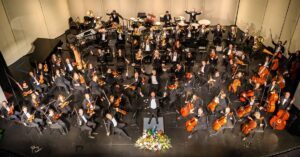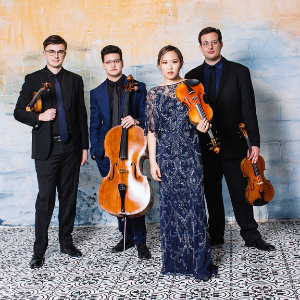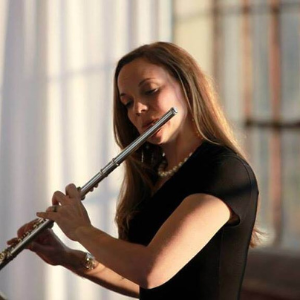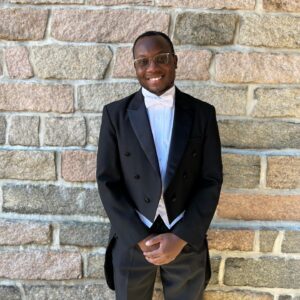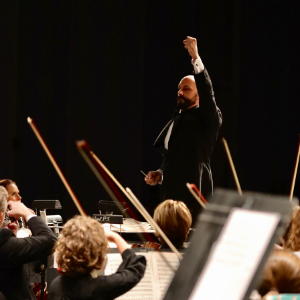Kaia String Quartet
March 14, 2015
Western Piedmont Symphony Chamber Classics IV
The Kaia String Quartet
By W. Gerald Cochran, Hickory, NC
The Western Piedmont Symphony welcomed the returning Kaia String Quartet to the auditorium of the Catawba Valley Arts and Science Center for its fourth Chamber Classics concert of the season. This is the third, of four, chamber concerts in which a visiting string quartet serves a two-week residency in Hickory with the hope of being chosen as the Resident String Quartet of the orchestra for the next three years.
The Kaia String Quartet, Victoria Moreira and Naomi Culp, violins, Sixto Franco, viola, and Hope Shepherd, cello, is based in Chicago, and has been the Ensemble in Residence of the Latin Music Festival of Chicago since 2012. Its focus has been of exploring the music of both contemporary and traditional Latin American composers.
Presented in tonight’s program was a wide variety of music, featuring works from the entire spectrum of the quartet repertoire, and opening with Franz Joseph Haydn’s (1732-1809) String Quartet in E-flat, Op. 33 (“The Joke”). It was Haydn who established, solidified, and refined the string quartet and chamber music with sixty-eight works over a period of four decades. This particular quartet was part of a group he dedicated to Grand Duke Paul of Russia. Haydn liked harmless jokes, and incorporated some humorous elements in the piece, including false starts and endings, tempo changes, and the like, all of which brought a chuckle to this audience.
The Norwegian composer, Edvard Grieg (1843-1907), is considered a national treasure in his homeland. He is probably best known for his piano concerto and the Peer Gynt music. He wrote only one complete string quartet, and it is considered a bridge between Beethoven’s quartets and those of Debussy and Bartok. The entire quartet is based on one theme, which Grieg took from a song he had written called “Fiddler.” There is a thickness of sound in this quartet, verging on that of an orchestra. In fact, his original publisher refused to publish this work because of the fear that so many simultaneous double stops would require the work to be rewritten as a piano quartet or sting quintet. The members of the Kaia Quartet, however, had no problem in bringing forth the grand sound and playing all of the double stops as written, for an exceptionally fine and pleasing performance.
Following intermission, the audience was treated to “Three Pieces for String Quartet” by Igor Stravinsky (1882-1971). This is a group of three very short works: “Danse,” which is a delightful, if very dissonant, dance, “Excentrique,” inspired by a music-hall clown, and is very true-to-life, and “Cantique,” a solemn, almost sad, song.
The last work on the program was the one of the cornerstones of the repertoire, the String Quartet in g minor, Op. 10, by Claude Debussy (1862-1918). Debussy was likened to the impressionist painters of his time, although he did not like being called an impressionist composer. The quartet is sensual and impressionistic, and breaks the rules of classic harmony, pointing the way ahead to new ideas in musical composition. The Kaia String Quartet shone in this performance, especially the second movement, which is very rhythmical. It almost had a Latin flavor, which brought to it a great deal of life.
While the entire performance was played with perfection, it was the encore where the quartet felt most at home, playing Argentinian composer Carlos Gardels’s (1890-1935) “Por una cabeza,” a tango made famous in many motion pictures, including Schindler’s List and True Lies. The opening cadenza for this performance was written and played by violinist Victoria Moreira, and was much more exciting and interesting than other performances of this that I have listened to.
In all, the Kaia String Quartet performed splendidly in a big and difficult program, producing a very pleased and satisfied audience.
Western Piedmont Symphony Announces 2023-2024 Season
HICKORY, N.C. (June 20, 2023) – Western Piedmont Symphony (WPS), the professional orchestra of the western foothills of North Carolina, announces its 2023-2024 season, MUSIC…
Finish ReadingWESTERN PIEDMONT SYMPHONY PRESENTS THE BALOURDET QUARTET
WESTERN PIEDMONT SYMPHONY PRESENTS THE BALOURDET QUARTET Chamber Classics finale features Beethoven, Mendelssohn, and more HICKORY, N.C. (March 20, 2023) – Western Piedmont Symphony…
Finish ReadingWESTERN PIEDMONT SYMPHONY PRESENTS MASTERWORKS – MIGHTY MAHLER
HICKORY, N.C. (February 28, 2023) – Western Piedmont Symphony (WPS), the professional orchestra of the western foothills of North Carolina, presents MASTERWORKS: MIGHTY MAHLER featuring…
Finish ReadingWESTERN PIEDMONT SYMPHONY WELCOMES NEW YOUTH SYMPHONY CONDUCTOR
HICKORY, N.C. (August 31, 2022) – Western Piedmont Symphony (WPS), the professional orchestra of the western foothills of North Carolina, is pleased to announce JaQuan…
Finish ReadingWESTERN PIEDMONT SYMPHONY ANNOUNCES 2022-2023 SEASON OF MASTERWORKS, FOOTHILLS POPS, AND CHAMBER CLASSICS CONCERTS
HICKORY, N.C. (August 28, 2022) – Western Piedmont Symphony (WPS), the professional orchestra of the western foothills of North Carolina, announces its 2022-2023 season, Experience…
Finish Reading
